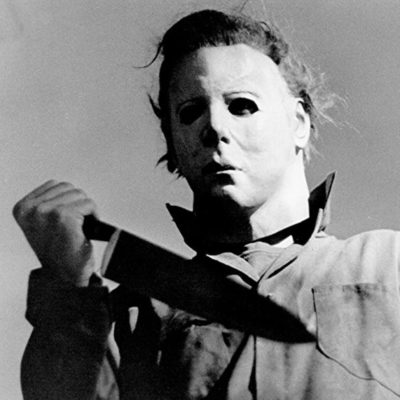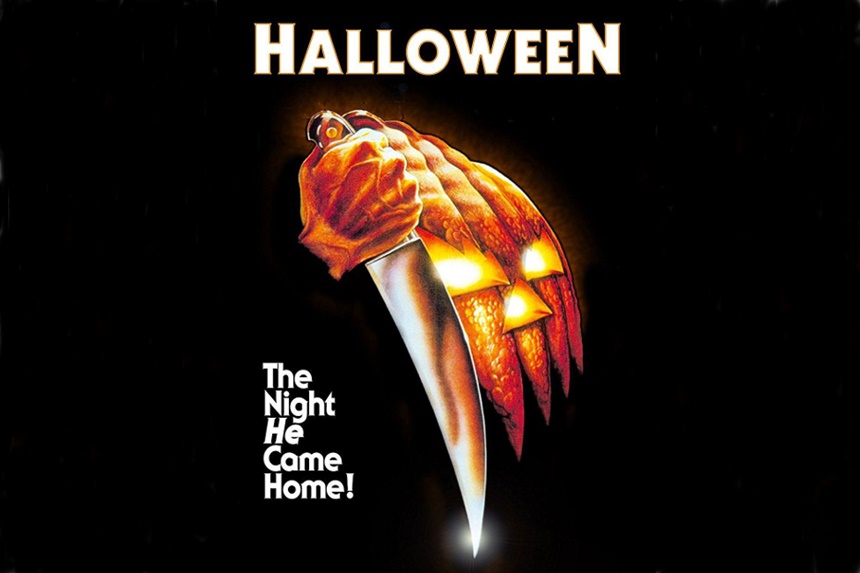What’s your earliest memory of Halloween? For some, it’s the commercial with the tagline, “The Night He Came Home.” For others, it was the 1981 showing on NBC’s Friday Night at the Movies. Then there are those that saw it in the theatre upon its first release in October of 1978. Whatever your first exposure to John Carpenter and co-writer Debra Hill’s tale of terror was, we can all agree that the film left an indelible impression on popular culture. Now, 40 years later, the latest iteration of what’s become an eleven-film horror staple sits atop the box office with record-shattering grosses. But just what made the original film so special? We look back at four factors that may ensure that Halloween lasts forever.
1. John Carpenter
It may be easy, and a little glib, to just say “the director made it good.” As always, it’s about how Carpenter made it that makes the difference. As the late, great film critic Roger Ebert noted in his original review of the film, Carpenter makes this horror film about more than violence by employing pure artistry. Ebert wrote, “Carpenter is uncannily skilled, for example, at the use of foregrounds in his compositions, and everyone who likes thrillers knows that foregrounds are crucial: The camera establishes the situation, and then it pans to one side, and something unexpectedly looms up in the foreground.”
The walking home sequence from Halloween.
Carpenter also made masterful use of tracking shots, such as the early scene where he follows Laurie Strode (Jamie Lee Curtis) and her friends down the sidewalk. It’s just the ladies, the camera, and the score that Carpenter composed himself. It is an incredible bit of tension as we wait for something to happen. There’s an early tease of discomfort with a station wagon, but that briefly abates. When we do fully see “The Shape,” Michael Myers, himself suddenly appear from behind a bush, then simply step back out of sight, it’s a visceral shock.
2. Jamie Lee Curtis
The original Halloween trailer.
Born into both Hollywood and horror royalty, Jamie Lee Curtis seemed genetically predisposed to become a genre icon. The daughter of Tony Curtis and Janet Leigh (of Psycho fame), Curtis made her film debut as Laurie Strode in Halloween at age 19. Laurie wasn’t the first “final girl” in horror, but Carpenter and Hill took pains to make her more than the last victim standing; they wrote her as smart, resourceful, and dedicated to the children in her care. Lou Cedrone of The Baltimore Evening Sun was among the early critics that sang Curtis’s praises for her performance. Halloween launched Curtis on a track of acting and writing that hasn’t slowed in 40 years. She went on appear in Carpenter’s The Fog and has played Laurie in four subsequent films, including this year’s new Halloween. In the book John Carpenter: Prince of Darkness by Gilles Boulenger, Carpenter recalled meeting with Curtis for the part of Laurie and that “I liked her instantly.” From the cult of fandom surrounding Curtis in the Laurie role and her overall career, it’s clear that he’s never been alone in that assessment.
3. The Shape aka Michael Myers

Creating a classic movie antagonist is hard. One presumes it’s even more difficult when the character doesn’t speak. On top of that, the character’s face is covered in an expressionless mask for the majority of the film. Michael Myers, occasionally referred to as simply, The Shape, nevertheless managed to become a figure of extreme menace thanks to Carpenter’s assured direction and a physically imposing performance by Nick Castle. In the Boulenger book, Carpenter said, “I always thought that the mask for evil should be an eerie, featureless mask.” In a bit of a humorous turn, the Myers mask was actually a Captain Kirk mask based on the features of William Shatner; production designer/art director Tommy Lee Wallace spray-painted it the pale blue that appears in the film. Carpenter loved the effect, saying, “It was almost like if Myers was wearing human flesh. Like Ed Gein.”
4. The Score
Halloween Theme, composed by John Carpenter.
One element of the film that’s received nearly universal praise since its release is the score. Carpenter generally does his own scores, and he manages to set a chilling tone on a consistent basis. He intentionally used five-four time because he knew that it would sound strange. As Carpenter told Boulenger, “Most popular music and most symphonic and classical music are not in that kind of weird time, so it sets you on edge [when you hear it] all the more since I used little high electronic driving notes.” Carpenter went on to say, “I’ve written better music now, but nothing will be more memorable and more compelling than this little simple thing. Isn’t it odd?” Odd, perhaps, but also eerie and unforgettable.
The complete list of things that work in Halloween runs much longer. There’s the legendary Donald Pleasance at Doctor Samuel Loomis. You see strong supporting work from Nancy’s friends, played by PJ Soles and Nancy Loomis (no relation). The individual pieces bind together into a very strong whole. In 2006, the film was chosen to be preserved in the United States National Film Registry by the Library of Congress as being “culturally, historically, or aesthetically significant.” At the end of the night, despite all of the talent and craftsmanship that went into the film, horror movies sometimes really only need to be answered with one question: was it scary? As Doctor Loomis would say, “As a matter of fact, it was.”
Featured Image: Original Halloween promo and poster art. (©Compass International Pictures)
Become a Saturday Evening Post member and enjoy unlimited access. Subscribe now



